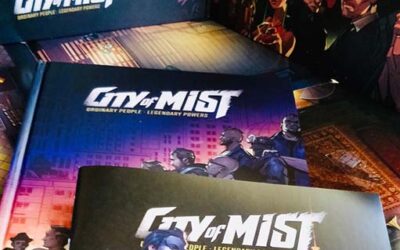Footprints in the Sand Tray: ADHD, Storytelling, and Sandplay Therapy
Before I knew what sand tray work was, I thought it was about setting figurines into sand to create a still-life 3D picture that is ripe with symbolism. That is all true. However, I have learned that sand tray is anything but still. It is a living, moving story. There is a lot of movement involved. Yes, there is symbolism, but it is so much more.
When someone creates a sand tray scene, they are telling a story— and usually more than one story. The story may be a combination of the past, present and future. For example, it may be exploring a trauma that occurred long ago, while also processing how that story outcome can be changed.
Engaging Story Telling
Story telling is an overarching component of sand tray work, with my work at least. While sandplay work itself is simply the process of arranging small figurines and representational objects into a tray that is a specified size, it can be very powerful therapeutic work. It can change how clients view themselves, and can help them to express what is going on in their inner world without using words. If you have ADHD, being able to express yourself with words and also be understood and accepted can be quite healing.
The sand tray title itself also tells a story. Here are some example sand tray titles, such as “The Wild Rollercoaster Ride,” “Who Knew The Family Was That Strange,” or “When I Sat Down, “The Dinner,” or “When I Tried That Thing.” The title itself might be a summary, an introduction, or an enticing invitation to be more curious. Typically the title is added last, after the last figurine has been placed. For someone with ADHD, adding the title can be especially thrilling, because it represents a completion. Planning, executing and competition fill an entire story.
Communicate Without Talking
One reason I love sand tray work is that it can be helpful for all ages. The sand tray itself represents a whole world that reflects an inner state of being. Sand tray work can promote deep healing, processing and the discovery of new outcomes. Sometimes verbal communication is difficult or does not feel right, and sand tray provides a non-verbal way to communicate. It slows down communication too, giving time and space to organize thoughts, which can help with practicing better Impulse control.
Texture + Expression = Calm Processing
Therapy sand has the properties of both wet and dry sand, so it can be light and fluffy or hard and ungiving, and it can be molded and sculpted. Playing with therapy sand can feel really good—it allows for expression of emotion, plus the texture of the sand on the hands can be calming and relaxing. Molding the sand can help people with ADHD focus and calm, which in turn can support tolerance of frustration and restlessness.
Rehearsal of Focusing Attention
Sandtray work provides a miniature and contained world to explore and rehearse ways of being. It can be particularly helpful for someone with ADHD to utilize sandtray, because the sandtray world is a focused area that can contain the imagination. While it opens opportunity for story, it can help rehearsal of focusing attention. Making up a new story on top of an old story is a type of work that can help you to process struggles you may have had in the past that are associated with ADHD, such as how you think about yourself, your self construct, and how you perceive others to think about you.
Organization and Planning Skill Building
It is actually very easy to get into the process of building a sandtray world, and it is a great place to practice planning, organizing, reordering, and prioritizing. Sand tray supports you to practice ways to stick with a theme, stay with a plan, and tell a full story, with constraints of space and a specified amount of time.
When you create a sand tray, you are practicing executive organization and planning skills. It is an inner experience of creativity, guided by the subconscious that is brought outside in a visual and tactile experience.
A Sensory Adventure
One thing I love about sand tray work is that it provides an opportunity for someone of any age to create an adventure, with or without words, and communicate that adventure so that the therapist can share in it. The sensory component of the sand tray works to help ground you and supports the management of things feeling very intense. It can be incredibly fun because you get to play with a huge collection of toys, and many types of sand medium.
What do you think of perfectionism? Can we be perfect, or is this a struggle that eventually only harms us alone? Have you struggled with perfectionism in the past?
Let us know your thoughts and insights in the comment section below!
This article was first created at TheraThrive, written by Grace Malonai, PhD, LPCC, BC-TMH




0 Comments